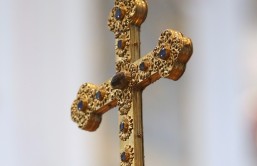The St. Louis Cardinals announced on Monday that they picked up Jaime Garcia's $11.5 million option for the 2016 season and the move pretty much rounded off their starting rotation for next year. Does this mean they will focus their free agent endeavors on outfielder Jason Heyward?
Rumors indicated earlier in the season that the Cardinals were interested in re-signing Heyward when he became a free agent after 2015. After all, the team traded club-controlled pitchers Shelby Miller and Tyrell Jenkins for one year of Heyward, so it makes perfect sense they'd look to establish a long-term relationship. The outfielder also hinted he wouldn't mind staying in St. Louis and the team was just as receptive.
"Jason was a tremendous fit on this club," Cardinals general manager John Mozeliak said in October. "If we have the ability to make it happen, we're certainly going to try."
Well, the move to pick up Garcia's team option perhaps suggests the team is poised to make a run at Heyward, despite the largest contract in franchise history being Matt Holliday's seven-year, $120 million deal. Heyward is expected to command more than that and it appears as if St. Louis is preparing for it by avoiding having to pursue free agent starting pitchers.
The Cardinals' rotation now consists of Adam Wainwright, Carlos Martinez, Michael Wacha, Lance Lynn and Garcia. This suggests they'll let John Lackey walk in free agency and stay away from the top free agent starters: David Price, Zack Greinke, Jordan Zimmermann, Yovani Gallardo, Jeff Samardzija, Scott Kazmir and others.
The Cardinals could also pick up Garcia's 2017 option if he has a good campaign next year, which will keep the rotation intact for another season at a reasonable financial rate.
With $103.5 million committed to the 2016 payroll and just $65.2 million committed to 2017, there is certainly enough space to sign Heyward to a long-term deal. However, Jeff Todd of MLBTradeRumors.com predicts Heyward will land a 10-year, $200 million deal. While that seems like an excessive amount for the Cardinals to dish out, there is one thing to keep in mind that may have them on board with the idea.
"It's important to note, also, that Heyward looks like a prime candidate to negotiate an opt-out clause into his deal," Todd added. "Given his age, he'd probably see value in having the right to return to free agency after a reasonable stretch. And Heyward is represented by Excel Sports Management's Casey Close, who has guided clients such as Zack Greinke and Masahiro Tanaka to opt-out arrangements."
Heyward would more than likely opt out of said contract if he continues on his current path because he'd be in line to earn himself another long-term deal down the road (like Greinke). Since Heyward won't be 27 until next August, he'll likely get a chance to opt out after four seasons, which would mean he can hit the open market again when he's 30.
Would the Cardinals be comfortable paying around $80 million for four years of Heyward in his prime, assuming his average annual salary is $20 million? I'd say yes, considering Heyward is the best all-around outfielder on the market this season (and perhaps in the MLB). Also, the 2017 free agent class is pretty weak and the Cardinals are set to lose both Peter Bourjos and Jon Jay when that time rolls around, so locking up Heyward would be prudent for multiple reasons.
This would set up the future outfield to consist of Heyward, Randal Grichuk and Stephen Piscotty if the Cardinals decide to decline Matt Holliday's $17 million team option for 2017. Holliday will be 37 before the start of the 2017 season, so it's realistic they don't pick up the option and instead buy him out for $1 million.
Nonetheless, aside from the bullpen, the Cardinals do not have many needs to fill this offseason. With plenty of money to spend and a good core of young prospects, they can afford to give Heyward market value even though it's likely going to be a lot more money than they'd prefer to spend.








